Unboxing Tool

What equipment do I need to start making unboxing videos ?
To start making unboxing videos, you'll need: 1. A camera or smartphone with at least 1080p resolution, image stabilization, and manual settings for clear, stable footage. 2. A tripod or gimbal to ensure steady shots and easy adjustments. 3. A microphone that provides clear audio and is easily connectable to your recording device. 4. Lighting equipment like softboxes, LED ring lights, and reflectors for even illumination. 5. A simple, clean background that is consistent across videos for brand recognition. 6. User-friendly editing software with features like color correction and audio mixing. 7. Extra accessories such as high-speed memory cards, spare batteries, and lens cleaning kits. 8. Props and tools for unboxing, including a letter opener, gloves, and measurement tools. Remember, while having the right equipment is crucial, your creativity, presentation skills, and consistency in publishing content are also key factors in the success of your unboxing channel.

How long should my unboxing videos be ?
This article discusses the importance of video length for unboxing videos, considering factors like audience attention span, product complexity, and platform requirements. It suggests best practices for creating engaging unboxing videos, including capturing viewers' interest, showcasing features, providing realistic feedback, and addressing pain points. The article also offers tips for keeping videos engaging, such as using visual aids, maintaining consistency, and encouraging audience engagement.
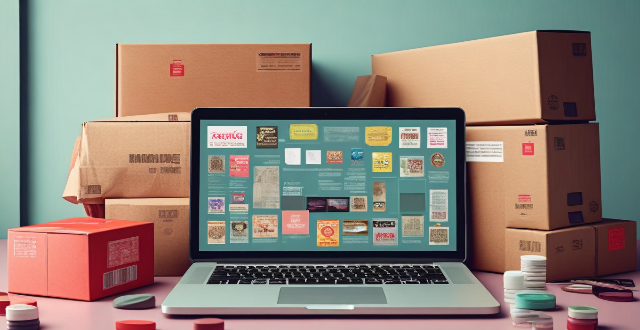
What is the best way to create an engaging unboxing video ?
Unboxing videos are a popular trend in product reviews and demonstrations, offering viewers a firsthand look at a product, its packaging, and the unboxing experience. To create an engaging unboxing video, it's important to plan your content, choose the right equipment, set the scene, start with a bang, showcase the product, share your thoughts, keep it short and sweet, and end with a call-to-action. By following these tips, you can produce a compelling video that showcases your product in an exciting and informative way.

How often should I release new unboxing videos ?
Unboxing videos have become a popular genre on social media platforms, especially for tech enthusiasts and consumers who want to see the latest gadgets in action. As an unboxing video creator, you may be wondering how often you should release new videos to keep your audience engaged and growing. Here are some factors to consider: - Audience Demand: Listen to your audience's feedback and analyze engagement metrics to determine if they want more frequent content. - Product Release Cycles: Align your schedule with product release cycles, such as monthly smartphone releases or seasonal products like holiday toys. - Content Quality vs. Quantity: Maintain high-quality content by investing time in good lighting, clear audio, and thorough explanations of the products you're unboxing. Don't sacrifice quality for quantity. - Consistency: Set a consistent schedule for releasing videos, such as weekly or bi-weekly, and communicate this schedule to your audience through social media posts, email newsletters, or at the end of each video. - Personal Capacity: Consider how much time and resources you can realistically dedicate to creating and editing videos. It's better to set a manageable schedule than to burn out by trying to do too much. - Competitive Landscape: Look at what other unboxing channels are doing and find ways to differentiate your content from others in the market. Maybe it's through humor, in-depth analysis, or focusing on niche products. There is no one-size-fits-all answer to how often you should release new unboxing videos. The key is to find a balance that works for you and your audience while maintaining quality and sustainability over time. By considering these factors, you can develop a strategy that keeps your viewers coming back for more.

What are some tips for filming a successful unboxing video ?
Unboxing videos have become increasingly popular in recent years, with viewers tuning in to see the latest products being unveiled and reviewed. If you're looking to create a successful unboxing video, here are some tips to help you get started: 1\. Choose the Right Product - Research Popular Products: Look for products that are currently trending or highly anticipated by consumers. This will increase the likelihood of your video being watched and shared. - Consider Your Audience: Think about who your target audience is and what products they would be interested in seeing unboxed. This will help you choose a product that resonates with them. 2\. Set Up Your Shooting Space - Find a Well-Lit Area: Natural lighting is ideal, but if that's not possible, make sure to set up additional lighting sources to avoid any shadows or dark areas in your footage. - Clear the Background: Remove any clutter from the background to keep the focus on the unboxing process. A clean, simple background will also make your video look more professional. 3\. Use Quality Equipment - Invest in Good Camera: A high-quality camera will produce clearer, sharper images, making your video more enjoyable to watch. - Use a Tripod or Gimbal: To stabilize your shots, use a tripod or gimbal to eliminate shaky footage and keep your camera steady throughout the unboxing process. 4\. Plan Your Shots - Create a Shot List: Plan out each shot you want to capture during the unboxing process, including close-ups of the product and its features. This will help you stay organized and ensure that you don't miss any important details. - Vary Your Angles: Incorporate different angles and perspectives into your shots to keep things interesting for your viewers. For example, you could start with a wide shot of the entire package, then move in for closer shots of specific details. 5\. Keep It Short and Sweet - Focus on Key Points: Don't spend too much time on unnecessary details or long introductions. Instead, focus on showcasing the product and its features in an engaging way. - Edit Your Footage: After filming, take some time to edit your footage together into a cohesive video. Cut out any unnecessary parts and add transitions between shots to make it flow smoothly. 6\. Engage with Your Audience - Add Commentary: As you unbox the product, provide commentary on what you're seeing and how it feels. Share your thoughts on the product's design, functionality, and overall quality. - Encourage Interaction: Ask questions or encourage viewers to leave comments about their experiences with similar products. This will help build a sense of community around your video and increase engagement.

How do I make my unboxing videos stand out from others ?
Unboxing videos have become a popular trend in the digital world, with millions of viewers tuning in to watch their favorite influencers unveil new products. However, with so many unboxing videos available online, it can be challenging to make yours stand out from the crowd. In this article, we will discuss some tips and tricks to help you create unique and engaging unboxing videos that will capture your audience's attention. ### 1\. Plan Your Content Before you start shooting your unboxing video, it's essential to plan your content carefully. Here are some things to consider: - **Choose the Right Product**: Select a product that is interesting and relevant to your audience. It could be something new or highly anticipated, or even a product that has received mixed reviews. - **Research the Product**: Familiarize yourself with the product's features, specifications, and benefits. This will help you create a more informative and engaging video. - **Create an Outline**: Jot down the key points you want to cover in your video, such as the packaging design, product features, pros and cons, and your personal opinion. ### 2\. Set Up Your Shooting Space The setting of your unboxing video can play a significant role in its overall appeal. Here are some tips for setting up your shooting space: - **Choose a Well-Lit Area**: Ensure that your shooting space is well-lit to produce high-quality footage. Natural light is always a good option, but if that's not possible, invest in some good lighting equipment. - **Keep the Background Simple**: A cluttered background can be distracting for your viewers. Keep your shooting space clean and simple, with minimal distractions. - **Use a Stable Surface**: Place your product on a stable surface to avoid any shaky footage during the unboxing process. ### 3\. Use High-Quality Equipment Using high-quality equipment can significantly improve the overall quality of your unboxing video. Here are some essential items to consider: - **Camera**: Invest in a good quality camera or smartphone with a high-resolution lens. This will ensure that your footage is crisp and clear. - **Microphone**: Good audio quality is crucial for keeping your viewers engaged. Use an external microphone or ensure that your built-in microphone is of good quality. - **Tripod/Gimbal**: To avoid shaky footage, use a tripod or gimbal to stabilize your camera during the shoot. ### 4\. Add Personal Touches Personal touches can help make your unboxing video more relatable and engaging for your audience. Here are some ideas: - **Introduce Yourself**: Start by introducing yourself and telling your viewers why you chose this particular product. - **Share Your Thoughts**: Share your thoughts and opinions about the product as you unbox it. This will make your video more interactive and engaging. - **Involve Your Audience**: Ask your viewers for their opinions on the product or encourage them to share their experiences in the comments section. ### 5\. Edit Your Video Professionally Editing is an essential part of creating a compelling unboxing video. Here are some tips for editing your video professionally: - **Trim and Cut**: Remove any unnecessary parts of the video that don't add value to the content. - **Add Text and Graphics**: Include text overlays and graphics to highlight key points and make your video more visually appealing. - **Use Transitions**: Add smooth transitions between different scenes to make your video flow seamlessly. - **Include B-Roll Footage**: Incorporate additional footage, such as product demonstrations or behind-the-scenes clips, to make your video more engaging. ### 6\. Promote Your Video Effectively Once you've created your unboxing video, it's time to promote it effectively to reach a wider audience. Here are some promotional strategies: - **Optimize Your Video Title and Description**: Use relevant keywords in your video title and description to improve its searchability on YouTube and other platforms. - **Share on Social Media**: Share your unboxing video on your social media channels, such as Instagram, Facebook, and Twitter, to reach a broader audience. - **Collaborate with Other Influencers**: Partner with other influencers in your niche to cross-promote each other's content and expand your reach.

What are some common mistakes to avoid when making an unboxing video ?
Unboxing videos are a popular way for consumers to get a closer look at products before making a purchase. However, there are some common mistakes that content creators should avoid when making these videos. These include lack of preparation such as not researching the product and inadequate lighting and sound quality. Additionally, focusing too much on packaging and ignoring the unboxing experience can also be detrimental. Neglecting post-production editing can result in inconsistent video quality and ineffective editing techniques. By avoiding these mistakes, content creators can create engaging and informative unboxing videos that resonate with their audience.

What are the benefits of creating unboxing videos for my business ?
Unboxing videos offer a unique marketing opportunity for businesses to showcase products authentically and engagingly, increasing brand awareness, enhancing customer trust, improving conversion rates, providing cost-effective marketing, and giving a competitive edge.
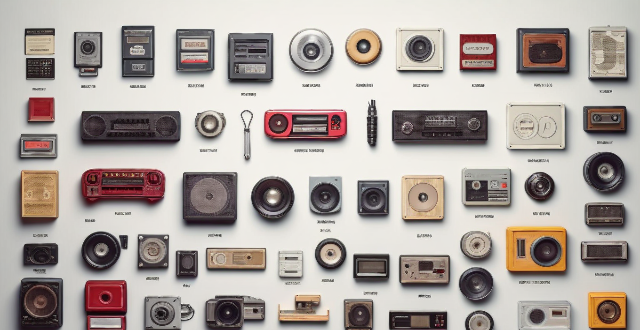
How can I monetize my unboxing videos ?
This comprehensive guide offers various strategies for monetizing unboxing videos, such as earning through advertising revenue, sponsored content, selling merchandise, crowdfunding, and licensing content. It emphasizes the importance of consistency, audience engagement, and content quality to attract viewers and potential revenue streams.

How can I promote my unboxing videos on social media ?
To effectively promote unboxing videos on social media, optimize the video content for high quality and SEO, share across multiple platforms like YouTube, Instagram, Facebook, Twitter, and TikTok. Engaging with the audience through comments, giveaways, and collaborations can build a community. Paid advertising and analyzing performance can also boost visibility. Consistency and quality are crucial for online success.

Can sports be used as a tool for conflict resolution and peacebuilding ?
The text discusses the potential of sports as a tool for conflict resolution and peacebuilding. It highlights the power of sports to break down barriers, promote equality, and build trust among individuals from different backgrounds, cultures, and beliefs. The text provides examples of how sports have been used in this context, such as the Olympics, Peace Teams International, and Soccer for Peace. It concludes that while sports alone cannot solve all conflicts or bring lasting peace, they can be a powerful tool in these efforts by creating a foundation for peace and understanding.
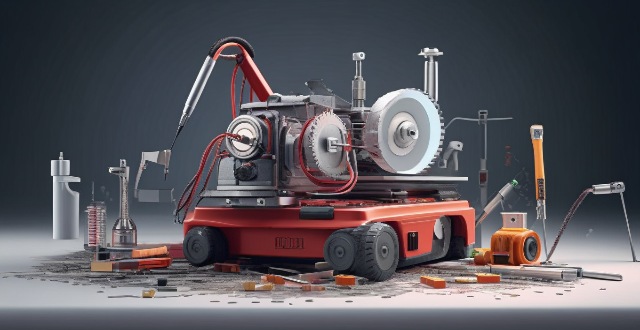
What are the benefits of using a digital tool for note-taking ?
The article discusses the advantages of using digital tools for note-taking, which include increased efficiency, improved learning and retention, environmental benefits, and collaboration opportunities. Digital notes can be taken quickly, organized easily, searched efficiently, and accessed from anywhere. They also offer visual aids, audio recordings, linking capabilities, and review options that enhance learning and retention. Additionally, digital note-taking reduces paper waste, energy consumption, and physical storage needs, contributing to a more sustainable environment. Finally, digital tools facilitate collaboration by allowing note sharing, real-time editing, version control, and feedback mechanisms. Overall, digital note-taking is an optimal choice for students, professionals, and anyone looking to optimize their note-taking experience.

How important is an earthquake emergency kit, and what should it contain ?
The text discusses the importance of being prepared for earthquakes by having an emergency kit with essential items such as water, food, a first aid kit, light sources, clothing, bedding or shelter, tools, sanitation and personal needs, important documents, cash, communication tools, maps and information. It also mentions additional considerations like pet care and multi-tools.

Can sports be used as a tool for soft power and influence in international politics ?
**Sports as a Tool for Soft Power and Influence in International Politics:** **Cultural Diplomacy:** Sports events offer platforms for countries to showcase their culture and history, fostering people-to-people exchanges that can lead to improved diplomatic relations. **Economic Impact:** Major sporting events can boost tourism and attract foreign investment, with infrastructure developments benefiting the host country's economy long-term. **Political Influence:** Sports diplomacy allows for informal discussions between politicians, symbolizing national strength and unity through successful hosting or victories. **Challenges and Limitations:** Considerations include resource allocation concerns, potential for political conflicts during events, and issues of commercialization affecting sports' role in soft power initiatives.

Can sports be a tool for personal growth and self-discovery ?
Sports offer numerous opportunities for personal growth and self-discovery, including building resilience and determination, developing teamwork and communication skills, enhancing self-discipline, promoting emotional health, discovering passion and purpose, and cultivating mindfulness and focus.

What software tools are available to help with budget creation ?
Budgeting is an essential aspect of financial planning, and there are several software tools available that can help with budget creation. Microsoft Excel, Google Sheets, Quicken, Mint, and YNAB are some of the most popular options. Each tool has its own set of features, pros, and cons that make it suitable for different types of users and budgeting needs.

Can sports be used as a tool for social change and community development ?
This text discusses the potential of sports as a tool for social change and community development. It highlights how sports can break down barriers, promote health and well-being, and contribute to education and personal development. The article also explores how sports can address social issues, empower communities economically, and promote peace and reconciliation. However, it emphasizes the need for equitable resource allocation, accessibility, and sustainability to fully realize the potential of sports in societal transformation.

What are some tips for cleaning hard-to-reach areas in my home ?
Cleaning hard-to-reach areas in your home can be challenging, but with the right tools and techniques, it becomes more manageable. Use extendable dusters, flexible brushes, and long-handled tools for better access. Be creative with vacuum attachments, steam cleaners, and magnetic sweepers to simplify the process. Remember safety by using non-slip step stools and wearing gloves. Regular cleaning schedules and making cleaning fun can help maintain these areas.
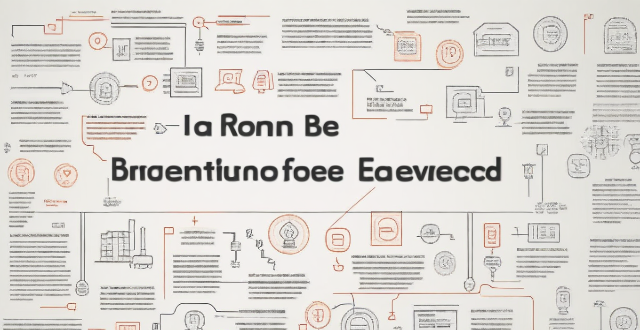
Are there any tools to help diagnose network latency issues ?
Network latency issues can be frustrating and detrimental to the performance of applications and services. Fortunately, there are several tools available that can help diagnose and troubleshoot these issues. Some popular tools used for network latency diagnosis include Ping, Traceroute, MTR (My Traceroute), Netstat, Tcpdump, and Wireshark. Each tool has its own strengths and weaknesses, so it's important to choose the right one based on your specific needs and circumstances. By using these tools effectively, you can identify and resolve latency problems quickly and efficiently.

What should be included in a basic emergency kit ?
A basic emergency kit should include essential items such as water, non-perishable food, a first aid kit, warm clothing and bedding, lighting and communication tools, a multipurpose tool, cash, personal documents, and a map. The contents may vary depending on the type of emergency and household size. It is important to regularly review and update the kit to ensure it remains effective.
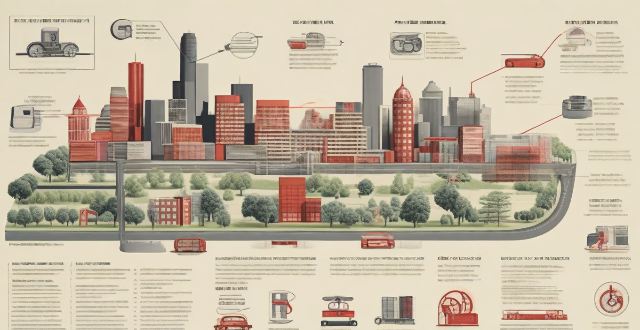
Are there any apps or tools designed to improve focus and productivity ?
In today's fast-paced world, staying focused and productive is crucial for success. With the plethora of distractions around us, it's essential to have tools that can help us stay on track. In this article, we will discuss some apps and tools designed to improve focus and productivity.

Can sports be used as a tool for breaking down social barriers and promoting equality ?
The power of sports to bring people together and foster a sense of community is undeniable. However, the question remains: can sports be effectively utilized as a tool for breaking down social barriers and promoting equality? Sports organizations are increasingly recognizing the importance of diversity both on the field and off. By actively recruiting athletes from different backgrounds, sports can serve as a visible symbol of inclusion. Through exposure to diverse teams and athletes, sports can help dispel stereotypes and prejudices, encouraging fans and participants alike to appreciate the unique talents and contributions of individuals regardless of their background. Participation in sports teaches valuable life skills such as teamwork, discipline, and perseverance, which can be instrumental in overcoming social barriers. Success in sports can empower individuals, particularly women and minorities, by providing a platform for them to showcase their abilities and achieve recognition. Major sporting events can stimulate local economies by creating jobs and promoting tourism. Investments in sports facilities can revitalize neglected areas, providing much-needed resources and encouraging further development. Grassroots sports programs can engage community members, fostering a sense of belonging and pride that extends beyond the playing field. Unequal distribution of resources can hinder the ability of some communities to fully participate in sports. Physical accessibility for athletes with disabilities remains a crucial issue that needs to be addressed comprehensively. Ensuring equal opportunities and treatment for female athletes continues to be a focal point in the fight for equality in sports. Efforts to promote diversity must be genuine and avoid tokenism, ensuring that all participants feel valued and respected. Organizations must continuously assess their progress toward inclusivity and make necessary adjustments to maintain effectiveness. Educating stakeholders about the importance of inclusivity and equity is essential for maintaining momentum and driving change.

What are the best software tools for creating mind maps ?
Best Software Tools for Creating Mind Maps Mind maps are an excellent way to visually organize information, ideas, and thoughts. They help in brainstorming, planning, and problem-solving. There are several software tools available that make it easy to create mind maps. Here are some of the best ones: 1. XMind is a powerful mind mapping tool that offers a range of features to create professional-looking mind maps. It has a user-friendly interface and supports various chart types, including tree, logic, and matrix. XMind also allows you to import and export data in different formats, making it easy to share your work with others. 2. MindMeister is an online mind mapping tool that lets you create mind maps directly in your browser. It offers real-time collaboration, allowing multiple users to work on the same mind map simultaneously. MindMeister also integrates with popular apps like Google Drive and Dropbox, making it easy to save and share your work. 3. Coggle is another online mind mapping tool that offers a simple and intuitive interface. It allows you to create beautiful mind maps with images, links, and notes. Coggle also supports collaboration, letting you invite team members to work on the same mind map together. 4. FreeMind is a free, open-source mind mapping tool that offers basic functionality for creating mind maps. It has a clean and straightforward interface, making it easy to get started with mind mapping. FreeMind also allows you to export your mind maps in various formats, including HTML and PDF. 5. iMindMap is a comprehensive mind mapping tool that offers a wide range of features for creating visually stunning mind maps. It has a unique "radial" view that makes it easy to focus on specific areas of your mind map. iMindMap also supports multimedia elements, such as images and audio files, making it an excellent tool for creative projects.
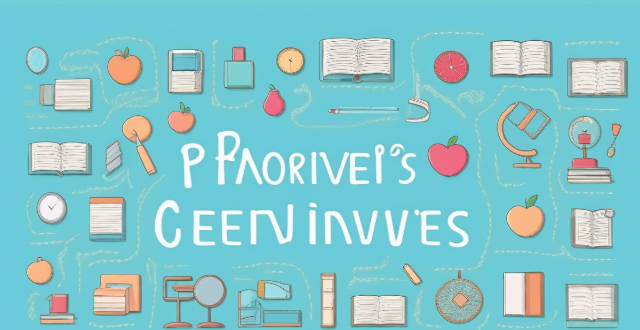
How can I improve my study habits to increase my learning efficiency ?
The text provides a comprehensive guide on how to improve study habits for higher learning efficiency. It suggests developing a consistent study schedule, creating an optimal study environment, using active learning techniques, breaking down study material, employing time management tools, setting clear goals, taking care of oneself, utilizing teaching as a learning tool, seeking help when needed, and reflecting on one's study methods. These strategies aim to enhance focus, concentration, memory retention, understanding, energy, interest, objectives, progress, brain rest, nourishment, knowledge reinforcement, assistance, perspectives, engagement, effectiveness evaluation, and approach adaptation. Consistency and self-reflection are emphasized as key factors in continuous improvement of academic performance.
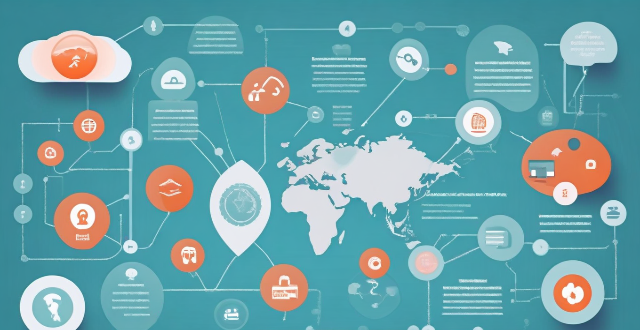
Can mind mapping be effectively used in business settings ?
Mind mapping is a visual tool that can be effectively used in business settings to enhance productivity, creativity, and communication. It helps individuals and teams organize information, generate ideas, and solve problems by creating a structured diagram of related concepts. The benefits of mind mapping in business include improved organization, enhanced creativity, increased productivity, and better communication. To implement mind mapping in business, one should choose the right tool, train their team, integrate it into processes, encourage collaboration, and continuously evaluate its effectiveness.

Can sports be used as a tool for personal growth and self-improvement ?
The text discusses the various ways in which sports can be used as a tool for personal growth and self-improvement. The author highlights the following aspects: - Mental toughness and resilience: Facing challenges and overcoming failure through sports can cultivate mental toughness and build resilience. - Teamwork and communication: Working together and effective communication are essential skills developed through team sports, which can enhance interpersonal relationships and group dynamics. - Discipline and time management: The structured approach required in sports can improve personal organization and time management skills, along with goal setting and strategic thinking. - Physical health and well-being: Sports contribute significantly to physical health by promoting fitness and endurance, and can also improve mental health by combating depression and anxiety. - Leadership and initiative: Sports provide opportunities for individuals to step up as leaders and develop problem-solving abilities, encouraging proactive behavior. - Self-confidence and self-esteem: Achieving mastery in sports can boost an athlete's confidence and self-esteem, fostering a positive self-image. - Adaptability and learning agility: Sports require athletes to adapt quickly to new tactics or game plans, encouraging a mindset of continuous learning that extends beyond the sporting realm. Overall, the text emphasizes that sports offer a comprehensive toolkit for personal development, encompassing benefits that extend far beyond the playing field. Engaging in sports can be a powerful catalyst for self-improvement and personal growth.

What are the essential kitchen tools every home cook should have ?
The text provides a list of essential kitchen tools that every home cook should have, including a chef's knife, cutting board, measuring cups and spoons, mixing bowls, saucepan, skillet/frying pan, baking sheet/roasting pan, whisk, wooden spoon or spatula, can opener, garlic press, grater, peeler, tongs, and colander/strainer. These tools are important for preparing meals and ensuring accurate measurements and successful cooking.